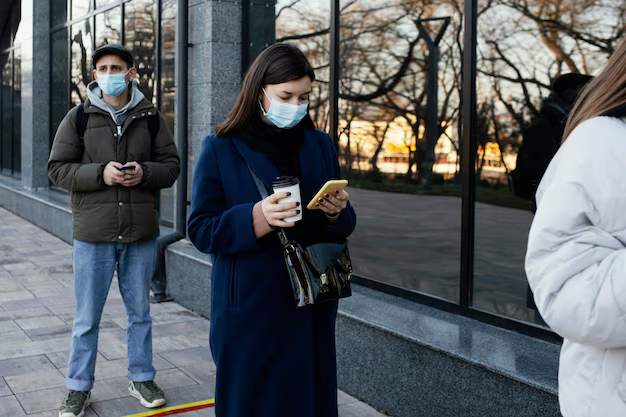Unveiling Tuberculosis: How It Spreads and What You Should Know
Tuberculosis (TB) is a disease that has shadowed humanity for centuries, adapting and persisting across generations. But how exactly does it spread, and what can we do to protect ourselves and those we care about? Join us as we delve into the intricate pathways of TB transmission and explore the broader implications on public health and individual well-being.
Understanding Tuberculosis: The Basics
What is Tuberculosis?
Tuberculosis is an infectious disease primarily affecting the lungs, though it can spread to other parts of the body. Caused by the bacterium Mycobacterium tuberculosis, TB spreads through the air. When an individual with active TB of the lungs coughs, sneezes, talks, or even sings, they propel microscopic droplets containing the bacteria into the air.
Active vs. Latent TB
One of the complexities of TB is the distinction between active and latent TB:
Active TB: This is the contagious form where symptoms are present. People with active TB of the lungs can spread the disease to others.
Latent TB: In this form, the bacteria remain in the body in an inactive state. While not contagious, latent TB can become active, particularly if the person’s immune system is weakened.
Understanding these differences is crucial in grasping how TB spreads and what precautions are necessary.
Pathways of Transmission: How TB Spreads
Airborne Particles: The Invisible Carriers
TB is sprouted not through casual contact, but through inhaling tiny, airborne droplets laden with the bacteria. The risk of transmission is highest in enclosed spaces where ventilation is poor, allowing these infectious particles to linger in the air longer.
Environmental and Social Factors
Several factors contribute to the spread of TB:
- Crowded Living Conditions: Populations in densely packed areas face heightened exposure risks.
- Poor Ventilation: Rooms lacking proper air circulation allow the bacteria to remain airborne for extended periods.
- Prolonged Exposure: Spending considerable time around someone with active TB increases the likelihood of transmission.
Vulnerable Populations
While TB can affect anyone, certain groups are more susceptible to infection:
- Individuals with Weakened Immune Systems: Those with HIV/AIDS, malnutrition, or other health issues have a higher risk of contracting active TB.
- Healthcare Workers: Frequent exposure to TB patients places them at increased risk.
- Travelers: Traveling to areas with high TB prevalence can elevate the risk of exposure.
The Broader Implications of TB Spread
Public Health Considerations
The spread of TB poses severe challenges to public health systems worldwide. Rapid urbanization, poverty, and limited healthcare access perpetuate the cycle of infection, requiring coordinated global efforts to address these underlying issues.
Multidrug-Resistant TB
A particularly alarming aspect is the emergence of multidrug-resistant TB (MDR-TB), which is resistant to common anti-TB drugs, complicating treatment and increasing mortality risks. This underscores the importance of effective diagnosis and treatment adherence to prevent further spread and resistance development.
Self-Protection and Prevention
Recognizing Symptoms Early
Early detection and treatment of TB are pivotal in curbing its spread. Key symptoms to watch for include:
- Persistent cough lasting three weeks or longer
- Chest pain
- Coughing up blood
- Fatigue
- Weight loss
- Night sweats
- Fever
Precautionary Measures
While treatment should always be administered by healthcare professionals, there are preventive steps individuals can take:
- Maintain Good Ventilation: Allow fresh air to circulate in indoor spaces.
- Use a Mask: Masks can reduce the risk of inhaling infectious droplets in high-risk settings.
- Regular Health Check-ups: This is especially important for vulnerable populations to ensure early detection.
- Promote Healthy Lifestyles: A balanced diet and regular exercise strengthen the immune system.
Vaccination
The BCG vaccine offers partial protection against TB, especially in children. While not completely effective against adult pulmonary TB, it's part of the preventive strategy in many countries with high TB prevalence.
Community and Healthcare Response
Role of Public Health Policies
Governments and healthcare systems play a crucial role in managing TB spread:
- Awareness Campaigns: Educating the public about TB symptoms and transmission methods can promote early diagnosis.
- Access to Treatment: Ensuring that treatment is affordable and accessible helps reduce infection rates and prevent drug resistance.
- Monitoring and Research: Ongoing surveillance and research are vital in understanding TB trends and developing new treatments.
Personal Responsibility and Stigma Reduction
Breaking the stigma surrounding TB is critical in encouraging individuals to seek timely medical attention. Open discussions and community support can create an environment where TB is understood and treated rather than feared and ignored.
Global Efforts
- World Health Organization (WHO) Initiatives: Global strategies that aim to reduce TB incidence and mortality through collaborative efforts across nations.
- Research and Development: International collaborations facilitate the development of new drugs, diagnostics, and vaccines.
Concluding Insights and Actionable Takeaways
TB remains a formidable public health challenge, but with awareness, actionable strategies, and community involvement, its spread can be curtailed. Remember, TB is preventable and treatable with the right measures in place. Whether it's improving ventilation, supporting health education, or advocating for better healthcare access, every effort counts in reducing the burden of this age-old disease.
🔍 Key Takeaways & Tips
- Understand the Risk: TB spreads through airborne droplets, primarily in enclosed spaces. 🦠
- Recognize Symptoms: Early detection is crucial, so be aware of persistent coughs, fatigue, and weight loss. 🕵️
- Enhance Ventilation: Keep indoor areas well-ventilated to reduce the risk of transmission. 🌬️
- Consider Vaccination: The BCG vaccine provides partial protection, particularly for children in high-risk areas. 💉
- Combat Stigma: Break down barriers and encourage open communication about TB in your community. 🗨️
- Stay Informed: Keep up with public health guidelines and support initiatives aimed at eradicating TB. 📘
Advocating for awareness and prevention, we can work collectively towards a TB-free world. 🌎
